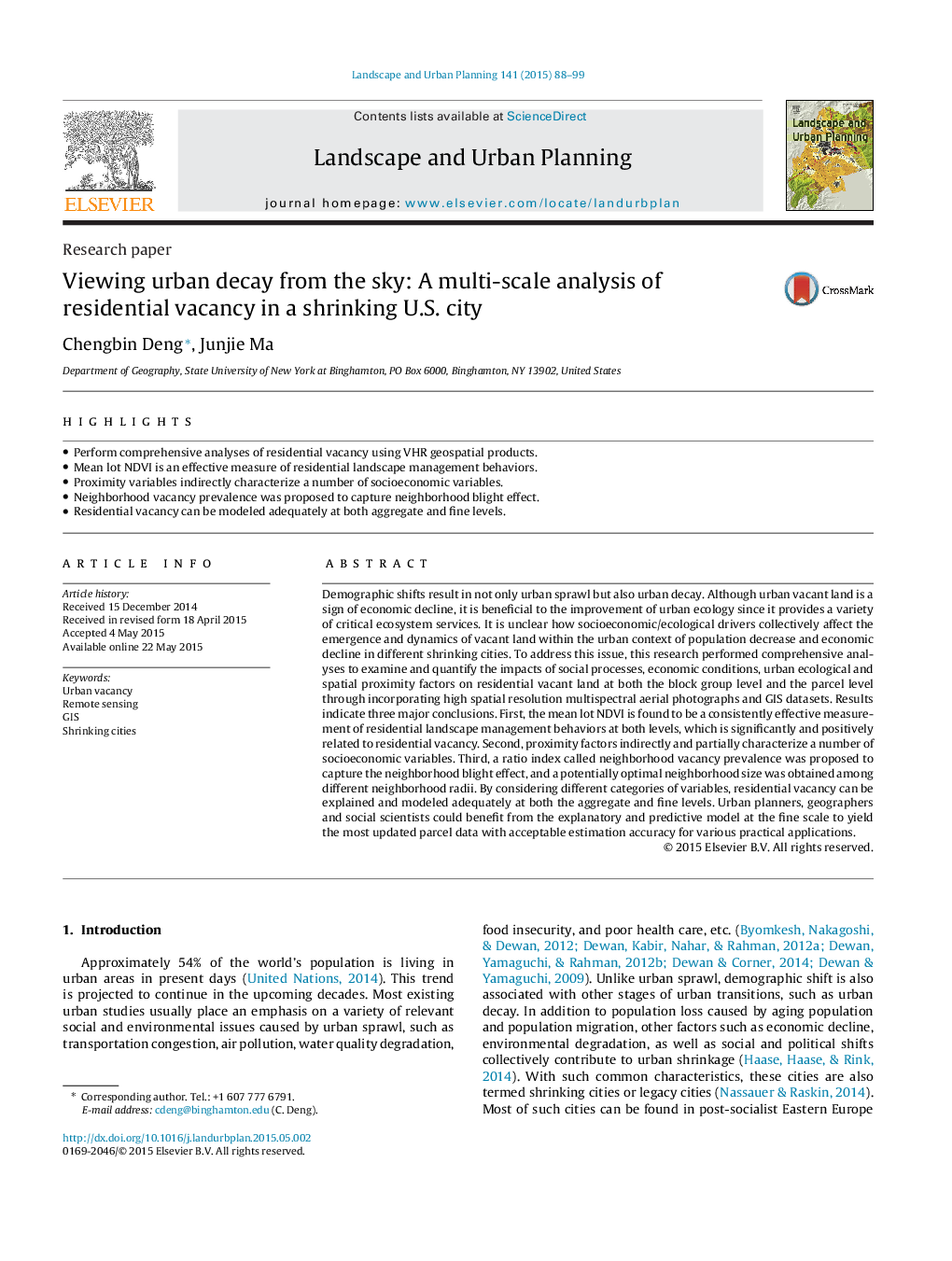| Article ID | Journal | Published Year | Pages | File Type |
|---|---|---|---|---|
| 7461111 | Landscape and Urban Planning | 2015 | 12 Pages |
Abstract
Demographic shifts result in not only urban sprawl but also urban decay. Although urban vacant land is a sign of economic decline, it is beneficial to the improvement of urban ecology since it provides a variety of critical ecosystem services. It is unclear how socioeconomic/ecological drivers collectively affect the emergence and dynamics of vacant land within the urban context of population decrease and economic decline in different shrinking cities. To address this issue, this research performed comprehensive analyses to examine and quantify the impacts of social processes, economic conditions, urban ecological and spatial proximity factors on residential vacant land at both the block group level and the parcel level through incorporating high spatial resolution multispectral aerial photographs and GIS datasets. Results indicate three major conclusions. First, the mean lot NDVI is found to be a consistently effective measurement of residential landscape management behaviors at both levels, which is significantly and positively related to residential vacancy. Second, proximity factors indirectly and partially characterize a number of socioeconomic variables. Third, a ratio index called neighborhood vacancy prevalence was proposed to capture the neighborhood blight effect, and a potentially optimal neighborhood size was obtained among different neighborhood radii. By considering different categories of variables, residential vacancy can be explained and modeled adequately at both the aggregate and fine levels. Urban planners, geographers and social scientists could benefit from the explanatory and predictive model at the fine scale to yield the most updated parcel data with acceptable estimation accuracy for various practical applications.
Keywords
Related Topics
Life Sciences
Agricultural and Biological Sciences
Ecology, Evolution, Behavior and Systematics
Authors
Chengbin Deng, Junjie Ma,
